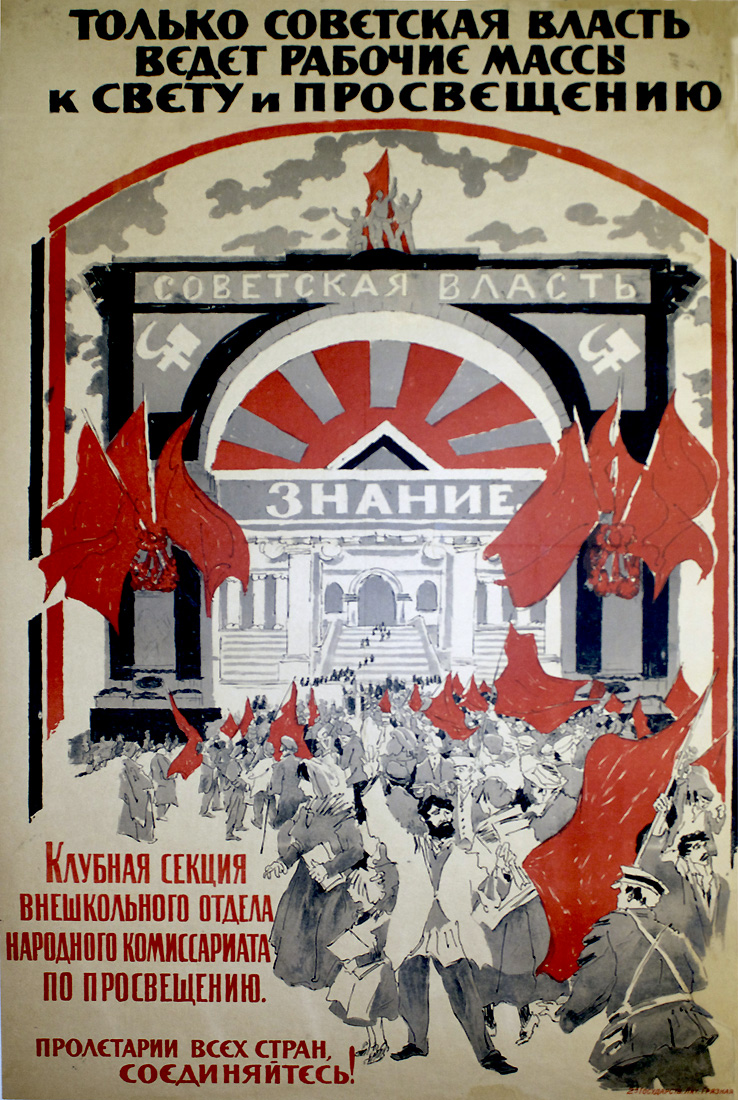
Only soviet rule can lead working masses to light and enlightenment. [Posted by] the Club Section of the Extramural Department of the Commissariat of Public Education.
Poster Number: PP 139
Category: Education & Literacy
Poster Notes:
(On the building) Soviet Power / knowledge.
(Bottom, lower left) Workers of all countries, unite!
Made for the Worker's Club Sections of the People’s Commissariat for Public Education, its printing was carried out in Petrograd (Saint Petersburg) at a time (circa 1918) when unification of educational institutions was carried out.
Media Size: 46.5x31
Poster Type: Lithograph
Publishing Date: c.1918
Catalog Notes: PP 139 Education and Literacy
Artist: Artist Unknown — неизвестный художник
The artist's name on the poster is not indicated. By assigning Artist Unknown to a poster it also could mean the artist used a chop mark whereby no signature is seen thus rendering the artist's identity anonymous.
Read More About This Artist
Printer: 2nd State Lithography Workshop, [Petrograd] — 2-я государственная литография, [Петроград]
The 2nd State Lithography Workshop was located at 8 Griaznaia Street in Petrograd (St. Petersburg). Prior to its nationalization in 1920, the workshop was the St. Petersburg headquarters of Wilhelm Wefers & Company, a German printing firm. In 1930, the printer was managed by the Lenpoligraf (Leningrad Printing) Trust, and in 1931 it was transferred to the Publishing House of the Executive Committee of the Lenoblsoviet (Leningrad regional council) and Lensoviet (Leningrad city council). During the 1950s, Griaznaia Street ...
Read More About This Printer
Publisher: Narkompros (People’s Commissariat for Education) — Наркомпрос
The People's Commissariat for Education (Narkompros) was formed in 1918 and it encompassed the former Imperial Ministry of Public Education, the State Education Committee, and the former Palace Ministry (an entity that managed theaters, the Academy of Arts and the royal palaces). Overseeing Narkompros was the All-Russian Central Executive Committee (VTsIK). As the main educational branch of the government, Narkompros carried out a compliment of programs such as the combating of illiteracy, professional education, adult education, ...
Read More About This Publisher